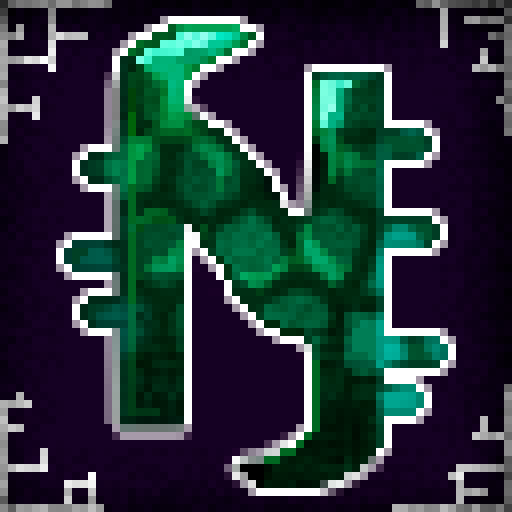Compatibility
Minecraft: Java Edition
Platforms
Supported environments
Details
Leukocyte
Leukocyte is a simple world protection mod for Fabric providing optional integration with player-roles.
The basis of world protection with leukocyte is an "authority". An authority is responsible for applying specific rules to players within it. An authority has a unique name, as well as a priority ("level"), and set of player exclusions.
creating authorities
To create an empty authority, run: /protect add <name>.
Alternatively, an authority can be created to apply within a specific area like:
/protect add <name> with universe(applies universally)/protect add <name> with <dimension>(applies within a specific dimension)/protect add <name> with <min> <max>(applies within a cuboid between two block coordinates)
An authority can be later removed with /protect remove <name>.
setting rules
Leukocyte provides various rules that can be applied within authorities. These rules are:
breakcontrols whether players can break blocksplacecontrols whether players can place blocksblock_dropscontrols whether blocks drop items when brokeninteract_blockscontrols whether players can interact with blocksinteract_entitiescontrols whether players can interact with entitiesinteractcontrols global interaction over blocks and entitiesattackcontrols whether players can attack other entitiespvpcontrols whether players can attack other playersportalscontrols whether players can construct portalscraftingcontrols whether players can craft itemsfall_damagecontrols whether players should receive fall damagehungercontrols whether players will become hungrythrow_itemscontrols whether players can throw items from their inventorypickup_itemscontrols whether items can be picked up by players or other entitiesunstable_tntcontrols tnt automatically igniting when placedignite_tntcontrols whether tnt can be ignitedspawn_witherscontrols whether withers can be summonedfire_tickcontrols whether fire tick is enabled within the authority. Defaults to gamerule if not setfluid_flowcontrols whether fluids flowice_meltcontrols whether ice and frosted ice melt
To set a rule as allow or deny on an authority, use /protect set rule <authority> <rule> <result>.
For example: /protect set example place deny will disallow block placement within the authority named example.
making shapes
Often, you may want to protect an area with a weird shape that is not just a simple box. To achieve this, it is possible to combine multiple simple shapes into a more complex one which will be used to apply rules.
To start, run: /protect shape start. This will begin the construction of a shape.
Next, to add primitives to this shape, run:
/protect shape add universeto add the universe into this shape/protect shape add <dimension>to add a dimension into this shape/protect shape add <min> <max>to add a cuboid between two block coordinates into this shape
These commands can be run multiple times to compose your shape.
Once you have finished composing a shape, you can run: /protect shape finish <name> to <authority>.
This will add a shape with the given name to the given authority.
This shape can be removed in the future with /protect shape remove <name> from <authority>.
setting levels
When dealing with multiple authorities, you may want one to take priority over another. For example, you may want a global authority to disallow griefing everywhere except specific areas for building.
This is where levels come in: a level is just any number, where a higher level indicates higher priority, and a lower level indicates lower priority. Given an authority with a level of -1, an overlapping authority with a level of 10 will override the rules of the first.
Levels can be set on an authority with: /protect set level <authority> <level>.
adding exclusions
It may not be desirable for the rules of an authority to apply to everyone. In this case, it is possible to exclude specific players, or entire roles from being affected by a given authority.
This is achieved through running: /protect exclusion add <authority> player <name> or /protect exclusion add <authority> role <name>.
These exclusions can additionally be later removed with /protect exclusion remove.
putting it together: an example
That was a lot of things! Let's put this knowledge together on a simple example.
Our example server will want to have global grief protection, except in our survival dimension and free-build areas. We additionally want to be able to exclude certain players from building in the free-build areas by use of a role.
Let's consider the two dimensions: minecraft:overworld and example:survival, as well as the role builders.
First, let's create an authority named global. Since we will mostly want protection everywhere, it makes sense to
globally apply protection and then specifically override this in specific areas.
/protect add global with universe
Next, we can set the rules on this authority:
/protect set rule global place deny/protect set rule global break deny
Done! Now, let's override this behavior in our survival dimension.
/protect add survival with example:survival/protect set rule survival place allow/protect set rule survival break allow
But wait..! How will the mod know to apply the rules of global or survival, since global also applies in the survival dimension?
Here, we can make use of levels: the default level for an authority is 0, and a larger value means higher priority.
So: let's set the level of our global authority to -1 such that anything we add in the future overrides it by default.
/protect set level global -1
Now we can similarly add our free build areas as exclusions too! Let's say we have two free build areas, creatively named free_build_1 and free_build_2.
First, we should create an empty authority that applies to both of them, since they both have the same rules.
/protect add free_build/protect set rule free_build place allow/protect set rule free_build break allow
Next, let's compose the shape for free_build_1:
/protect shape start/protect shape add -10 0 -10 10 255 10
... and add it to our authority/protect shape finish free_build_1 to free_build
And repeat the same for free_build_2:
/protect shape start/protect shape add -100 0 -10 90 255 10
... and add it to our authority/protect shape finish free_build_2 to free_build
Done! Now the free-build areas should be editable by any player- except, we want to create exclusions such that we can 'ban' players from the areas.
Let's do that with a free_build_banned role:
/protect exclusion add free_build role free_build_banned
With that, all our protection should be set up nicely! :)
testing! querying and checking rules
Okay, we've set up authorities, but how can we easily check which rules are set and by what?
A few commands may come in handy:
/protect test: tests all the rules that apply at a given location, and shows from which authority they originate/protect list: lists all authorities in the world/protect display <authority>: displays the rules and shape of the given authority


